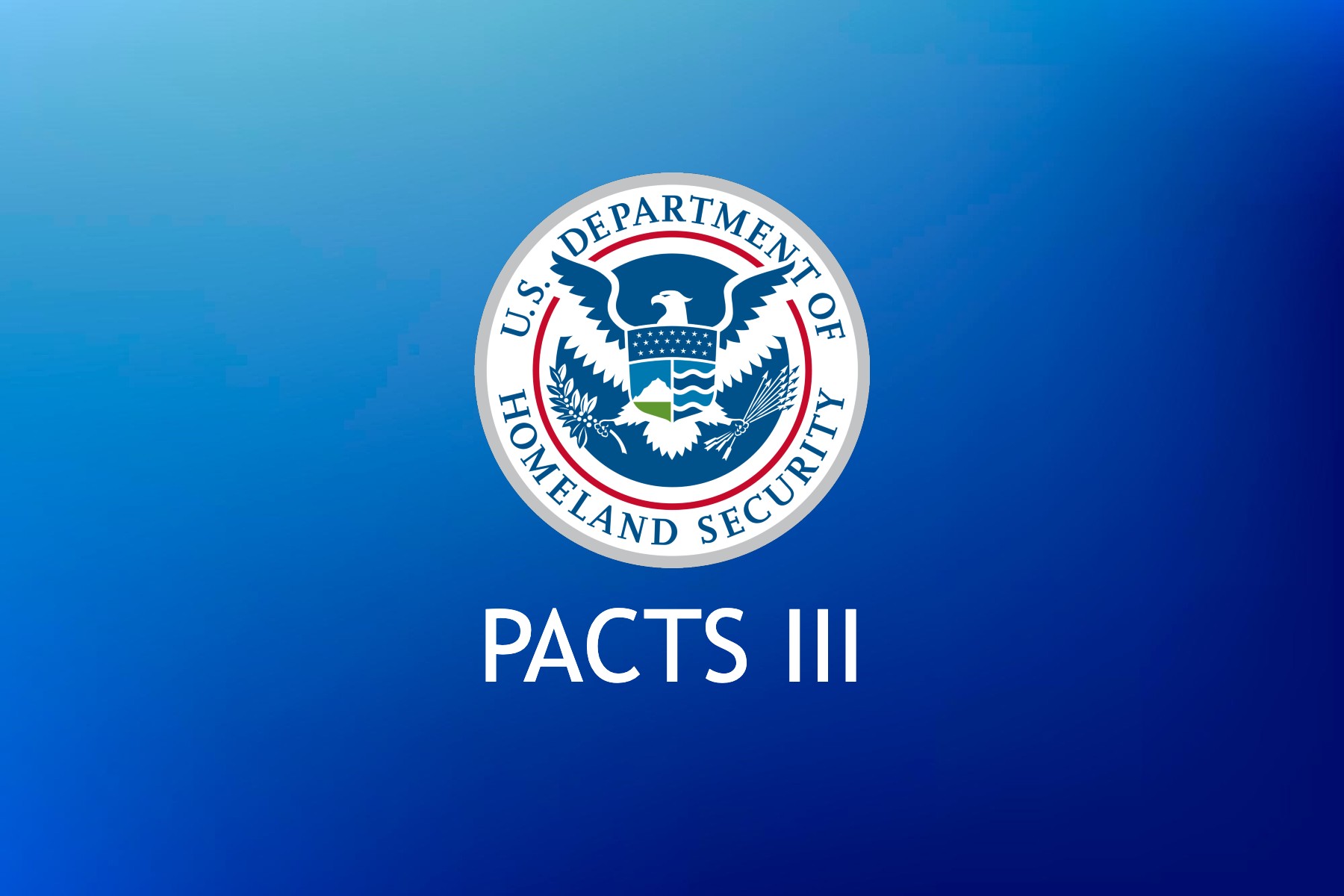The Department of Homeland Security (DHS) is advancing with the PACTS III contract, and as we wait for the agency to announce details on the industry day, it’s time to strategize for success.
The Winning Strategy: Team Up with Small Business Subcontractors
The primary way to win one of the 60 awards on PACTS III is to score the most points by building large teams of small businesses with a large number of relevant projects within total contract value between $50K and $5M. OST estimates that a team should have more than 50 recent and relevant projects to win an award in one of the three functional categories.
Form Large Teams: Unlike some of the other scorecard proposals that value total size of the contract (OASIS+, POLARIS, etc.), PACTS III values the quantity of relevant past projects. Larger projects are actually worth less points, in many cases, than smaller projects. In order to win a contract, primes must collaborate with small business subcontractors who have many projects relevant to the Functional Category (FC) you’re targeting.
Clarifying Past Performance: Whose Projects Count?
A section of the draft RFP for PACTS III has led to much confusion about past performance requirements and who can submit projects for points. Section 1.3 (top of page 70) within Instructions to Offerors in the DRFP reads:
“An “Offeror” is defined as a Prime Contractor (without subcontractors or affiliates) and all members of a Small Business Administration Small Business Joint Venture (SBA JV), SBA Mentor Protégé Program (SBA MPP) or Small Business Teaming Arrangement.”
This paragraph is simply providing the definition of “Offeror” for this RFP. However, the next paragraph includes this note at the end:
“Note: Projects performed by members of a Small Business Teaming Arrangement do not meet the definition of relevant as defined in 4.3.1.1.1 below; therefore, only projects that the Prime Contractor of Small Business Teaming Arrangements shall be claimed.”
Many have interpreted this to mean that only the prime member of a team pursuing PACTS III can submit past performance. These two paragraphs are actually unrelated, and the “Note” in the second paragraph is simply stating that only projects performed as a prime contractor will be considered relevant. In other words, the members of your small business teaming arrangement can submit projects for points under PACTS III as long as they performed as the prime.
Our interpretation is future supported by this requirement in Section 4.3.1.1.1 Project Relevancy, which says:
“Additionally, if more than one contractor performed services under the same contract and completed different parts of the scope, only the contractor that performed the predominant service may claim the project.”
For your PACTS III bid, ensure that you submit past performance projects where your company or your team members acted as the prime contractor. Avoid submitting projects where the company was a subcontractor, as these will not be considered relevant for the evaluation.
Why This Strategy is Crucial for PACTS III:
Points-based Evaluation: PACTS III uses a points-based system for evaluation. The more relevant projects you have, the more points you can accumulate, enhancing your chances of winning. But unlike scorecard-based contracts like GSA’s OASIS+ or POLARIS, where larger contracts were worth more points, in PACTS III, the emphasis is on providing as many projects as possible in the $50,000 to $5 million range.
Competitive Advantage: An extensive portfolio of past performance projects underscores your capability and experience, giving you an edge over other bidders.
Meeting Revenue Bands: PACTS III has specific revenue bands for project eligibility. A diverse range of projects ensures alignment with these bands, optimizing your proposal’s suitability.
Maximizing Chances in Limited Awards: With a restricted number of awards in each socioeconomic category (5 per category, for a total of potentially 60 awards), forming large teams and leveraging numerous projects maximizes your chances of selection.
Effective Teaming Arrangements: Large teams of small businesses enable collaborative teaming arrangements. By pooling resources, expertise, and past performance, you can bolster your proposal’s strength and competitiveness.
How OST Can Help
As you gear up for the PACTS III opportunity, OST is here to provide you with comprehensive support:
Scorecard Analysis & Teaming Support: Our experts can help you maximize your scorecard and find teammates to strengthen your bid.
Subcontractor Portal: Find teammates and showcase your capabilities for PACTS III and other opportunities by uploading them to our dedicated portal: OST Teaming Partner Match Portal.
Schedule a Strategy Session: We’re here to assist you with your PACTS III bid. Schedule a time with our team to discuss your specific needs: OST BD Consulting Calendar.
Stay Updated: We regularly share insights, updates, and valuable resources related to major contracts. Stay informed by checking out our:
PACTS III Webinar
Blog
Newsletter Sign Up
OST Global Solutions is a professional business development consulting firm. We have extensive experience in winning large, strategic bids like PACTS III. We can provide capture and proposal teams to develop a complete, winning proposal. Or we can provide consultants on a case-by-case basis to fill gaps on your business development team. Our services related to PACTS III consist of capture management, cost volume development, price-to-win analysis, team identification/negotiation, proposal management, proposal writing, editing, graphics, and desktop publishing.
Contact us to discuss your bids, so we can help you develop a winning proposal.
service@ostglobalsolutions.com
Upcoming Bid & Proposal Academy Classes
Winning Government Cost Proposals Including AI Essentials (Live Class)
OST Global Solutions Virtual Classroom MD, United StatesDeveloping a Winning Cost Volume course helps you increase your federal contract win probability. We focus on Government contract evaluation, pricing fundamentals such as cost buildup and cost volume elements, price strategy, developing basis of estimate (BOE), coming up with assumptions, Work Breakdown Structure (WBS), cost volume narrative, winning in lowest price technically acceptable proposals (LPTA), and much more.
Master AI to Enhance BD, Capture, & Proposal Processes – Updated to Include the Latest AI Developments (Live Class)
OST Global Solutions Virtual Classroom MD, United StatesAre you ready to enhance your bid flow, improve your Pwin, cut down the time it takes to do most BD tasks, improve decision-making, and reduce proposal risk by ensuring your submissions are compliant and compelling? This course is specially designed for BD professionals in Government contracting firms seeking to harness the power of AI in their operations. Over three comprehensive sessions, you will gain the knowledge and tools to transform your BD strategies and execution. Learn More
Proposal Graphics Conceptualization & Design (Live Class)
OST Global Solutions Virtual Classroom MD, United StatesThis course provides the skills necessary to conceptualize proposal graphics that convey your winning solution to Government customers. In addition to brainstorming on a graphic idea, this training shows you how to design an action caption, sketch a graphic concept, deliver a specific visual message to the Government customer, and use professional graphic design principles and resources to make your graphics look attractive.




